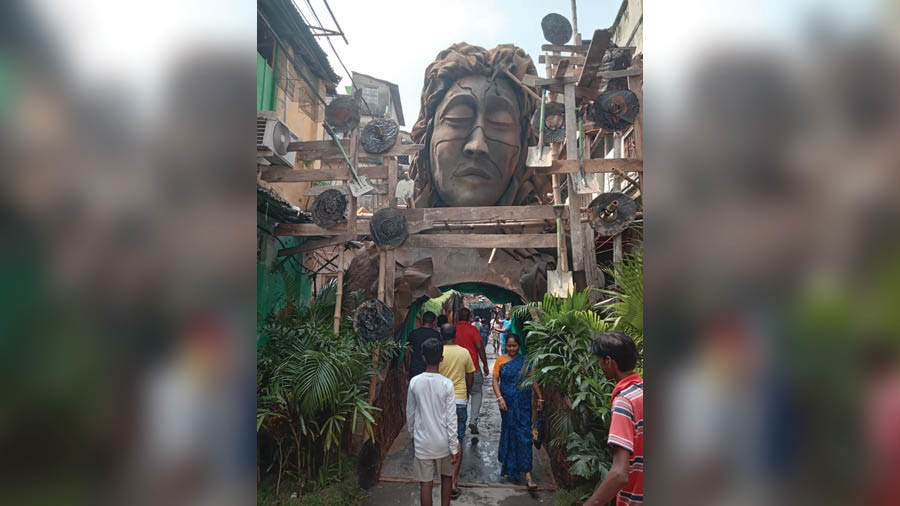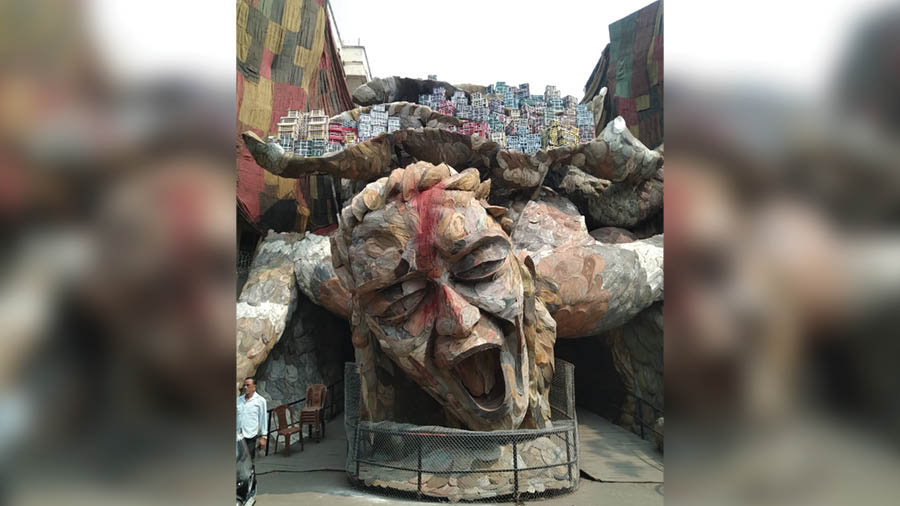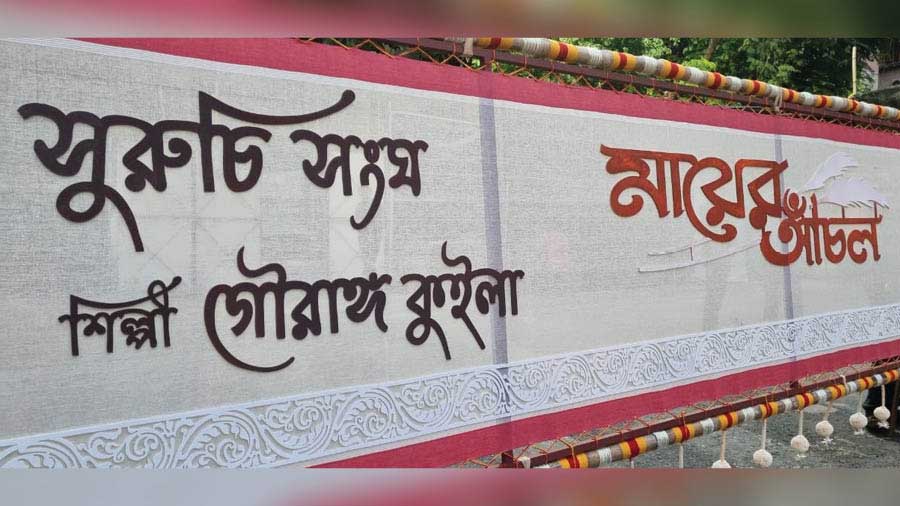Eighty community pujas in Kolkata have made it to the primary round of judgement under Serader Sera Nirmal Puja Puroskar (Greenest of the Green Puja Awards); the pioneering environment puja award that is in its 16th year.
The award has been constituted by nonprofit Environment Governed Integrated Organisation (EnGIO); and is supported by The Bengal - Greening Bengal and Climate Action Network South Asia (CANSA). My Kolkata is a partner in the initiative.
“Out of around 300 puja committees that applied, we have shortlisted about 80 spread across Kolkata and Salt Lake based on criteria such as installation of environmental themes as well as use of natural materials in the pandals and in execution of the overall pujas. We also considered parameters such as energy use, waste control as well as social contribution of the clubs within their neighbourhood,” said Sujata Basu of EnGIO.
The jury for the award will visit pandals in and around the city on Chaturthi and Panchami — October 18, Wednesday, and October 19, Thursday — to find the regional toppers. Judges will again visit these pandals on Sashthi and Saptami — October 20, Friday, and October 21, Saturday. The final winners are expected to be announced on Saptami (October 21) night and the prizes will be handed over on Ashtami, October 22, Sunday, by French consul general Didier Talpain and a few environment experts.

Eighty community pujas in Kolkata have made it to the primary round of judgement under Serader Sera Nirmal Puja Puroskar (Greenest of the Green Puja Awards); the pioneering environment puja award that is in its 16th year. The award has been constituted by nonprofit Environment Governed Integrated Organisation (EnGIO); and is supported by The Bengal - Greening Bengal and Climate Action Network South Asia (CANSA). My Kolkata is a partner in the initiative. “Out of around 300 puja committees that applied, we have shortlisted about 80 spread across Kolkata and Salt Lake based on criteria such as installation of environmental themes as well as use of natural materials in the pandals and in execution of the overall pujas. We also considered parameters such as energy use, waste control as well as social contribution of the clubs within their neighbourhood,” said Sujata Basu of EnGIO. The jury for the award will visit pandals in and around the city on Chaturthi and Panchami — October 18, Wednesday, and October 19, Thursday — to find the regional toppers. Judges will again visit these pandals on Sashthi and Saptami — October 20, Friday, and October 21, Saturday. The final winners are expected to be announced on Saptami (October 21) night and the prizes will be handed over on Ashtami, October 22, Sunday, by French consul general Didier Talpain and a few environment experts.
Green themes
The pujas have been split into seven regions — Behala- Haridevpur; Kasba- EM Bypass- Dhakuria, Ultadanga- Beleghata- Tala, north Kolkata, Bhowanipore- Kalighat- Kidderpore, Salt Lake- Baguiati- Entally, and Jadavpur- Garia- Santoshpur with 10-12 pujas in each region, according to Subhayan Dutta, an environment faculty in a south Kolkata college who is part of the selection process.
Selection committee members said several new as well as contemporary environmental issues have been showcased by community pujas this year.
“While climate change and related issues such as global warming and tree cutting dominate the environmental themes, several offbeat green themes ranging from disasters in mountains triggered by climatic impacts to disappearing fireflies or birds vanishing because of environmental pollution have been focused on,” said Basu.

The Beliaghata 33 No. Pallibasi Brinda puja highlights how urbanisation is pushing the mountains to the brink
At Beliaghata 33 No. Pallibasi Brinda, one of the shortlisted pujas, the theme is Shailarti (Cry of Mountain). “We have tried to depict how the mountains have been suffering under continuing stress of so-called development and environmental as well as climatic degradation. The recent disaster in Sikkim vindicates our theme,” said Parimal De of the puja committee.
Gopal Doctor Road Jubak Sangha, another shortlisted puja, traces how fireflies are vanishing in cities like Kolkata due to loss of habitat because of environmental pollution, said Avijit Bardhan, a club representative.
“We have about 15 clubs focussing on climate change-related issues such as tree cutting, rising heat, reducing rainfall and likewise,” said a non profit representative.
Use of natural materials
Several pujas have ensured the use of natural and eco-friendly materials. “We have mostly used natural materials in the making of the pandal and in depicting the theme,” said Kolkata mayor Firhad Hakim, the major force behind Chetla Agrani.

Cloth banners have replaced plastic ones at Suruchi Sangha
The popular Suruchi Sangha has not only highlighted traditional Bengal art forms and handicrafts in the pandal but also used natural materials to showcase those.
“Moreover, we have decided to spread the anti-plastic message through Durga puja by doing away with plastic banners as much as possible. Almost 90 percent of our 350-odd banners displayed all over the city are made of cloth and canvas,” said Debasish Das of Suruchi.
Artist Gouranga Kuila, who has conceptualised this year’s theme for Suruchi Sangha, said, “Keeping in mind the need to showcase environmental responsibility through such a big platform, we came up with the idea of environment-friendly banners for Suruchi Sangha this year.”
Debasish Kumar, the chief driver behind the Tridhara puja, also emphasised that protection of the environment through greening of the neighbourhood has always been a priority and this year the puja also carries forward the trend.
Several other clubs such as Shiv Mandir, Dum Dum Dakshinpara Durgotsab Committee and Naktala Udayan Sangha have tried to embrace eco-friendly materials to showcase their pujas.

